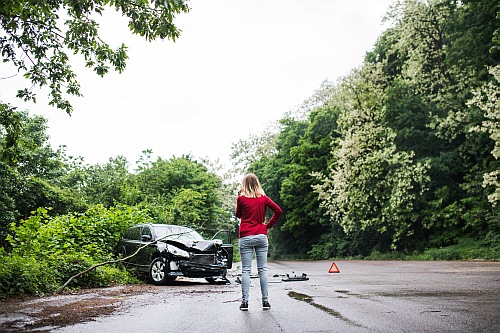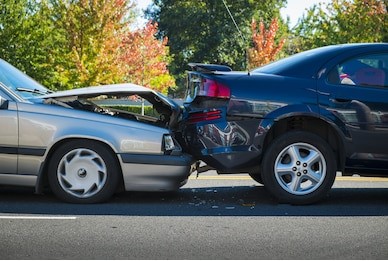Anyone who routinely watches the evening news is well aware that high-speed police chases are not uncommon. While considerable reporting time is spent discussing these events, one wrinkle that is sometimes overlooked in these discussions is the risk for pedestrians and other motorists occasioned by the decision to give chase. Indeed, given the risk of third-party injury, many law enforcement agencies, including the City of Atlanta Police Department, have developed guidelines for high-speed pursuits designed to minimize the danger they create for the general public. However, the existence of a chase protocol does not always mean adequate compliance with that protocol, which is the key subject addressed in a recent decision from the Georgia Court of Appeals, City of Atlanta v. McCrary (PDF File).
McCrary involved the death of two people who were hit by a fleeing suspect on the night of January 28, 2008. On that day, an officer noticed a car with an improperly completed drive-out tag. When the officer turned on his siren and lights, the driver of the vehicle accelerated, and the officer began to give chase. There is some factual dispute about what happened afterwards. In his deposition testimony, the officer stated that he soon realized he lacked a sufficient legal basis for either starting or continuing the chase and that he consequently terminated the pursuit and turned off his lights and siren. The officer further stated that about a mile after he had ceased following the suspect, he once again happened upon the vehicle, which had collided head-on with another car that was occupied by the two deceased victims. The fleeing suspect, however, stated in an affidavit that he never lost sight of the police cruiser or its flashing lights.
The estates of both deceased parties brought wrongful death suits against the City of Atlanta, alleging that the officer and the city were negligent, that the officer’s decision to initiate a high-speed chase violated the department’s high-speed pursuit policy, and that the city had maintained a nuisance that endangered the public by failing to enforce its pursuit policy and by failing to train and supervise its officers pursuant to the policy. The city moved for summary judgment, arguing that its liability was limited to $700,000, but the trial court, finding a question of material fact with respect to the nuisance claim, declined the motion.
Under Georgia law, “[a] nuisance is anything that causes hurt, inconvenience, or damage to another and the fact that the act done may be otherwise lawful shall not keep it from being a nuisance.” OCGA § 41-1-1. In order for a municipality to be liable for the creation or maintenance of a nuisance, the three following elements must be shown: “degree of misfeasance exceeds mere negligence; act is of some duration and is continuous or regularly repetitious; municipality fails to act within reasonable time after knowledge of dangerous condition.” Heller v. City of Atlanta, 290 Ga. App. 345, 350 (2) (659 SE2d 617) (2008). In this case, the court first reviewed the history of the police department’s pursuit policy, which was developed in 2002 following a spate of accidents resulting from high-speed chases. The court was skeptical that failure to enforce the pursuit policy could constitute a nuisance, but the court avoided addressing this issue directly by holding that even if it could be considered a nuisance, the argument would still fail because of the plaintiff’s failure to prove causation. The court found that the plaintiffs had failed to proffer any evidence that was sufficient to establish a causal link between failure to enforce the pursuit policy or adequately train officers and the specific deaths in these cases. Although the court noted the statistical evidence that had been submitted by the plaintiffs, it still concluded that evidence was insufficient because the statistics only addressed pursuit-related collisions generally and did not link these others collisions or the resulting injuries to a failure to adequately enforce or train.
Indeed, the nuisance claim made by the plaintiffs in McCrary was always going to be difficult to prove. However, this creativity was necessary under the circumstances because damages were otherwise subject to limitation. Although the plaintiffs failed to successfully assert their nuisance claims in this instance, willingness to make intrepid arguments designed to maximize a client’s recovery is a part of the practice and an attribute one should always seek in counsel. The Atlanta wrongful death attorneys at the Law Office of Terrence R. Bethune have ample experience representing plaintiffs in actions like these and making arguments that are essential to maximizing possible recovery. Although recovery can never be assured, our attorneys can assist you with making your strongest possible case. If you’ve recently been injured or lost a loved one as a result of the negligence of another and would like to know your options, feel free to click here or call 1-800-487-8669 for a free case consultation.
Subject Related Articles

Navigating Macon Car Accident Claims: Step-by-Step Guide
You’ve been in a Macon car accident, and now you’re faced with insurance claims, police reports, car repairs, and more. It can feel overwhelming trying
June 24, 2024

Avoid These Mistakes After a Car Accident in Carrollton
You’ve just been in a car accident in Carrollton. Even minor fender benders can be stressful events. But before you step out of the car
May 20, 2024

What to Do After a Hit-and-Run Accident
So you’ve just been in a hit-and-run accident. Your first thought is probably to chase down the other driver, but that may not be the
April 19, 2024





